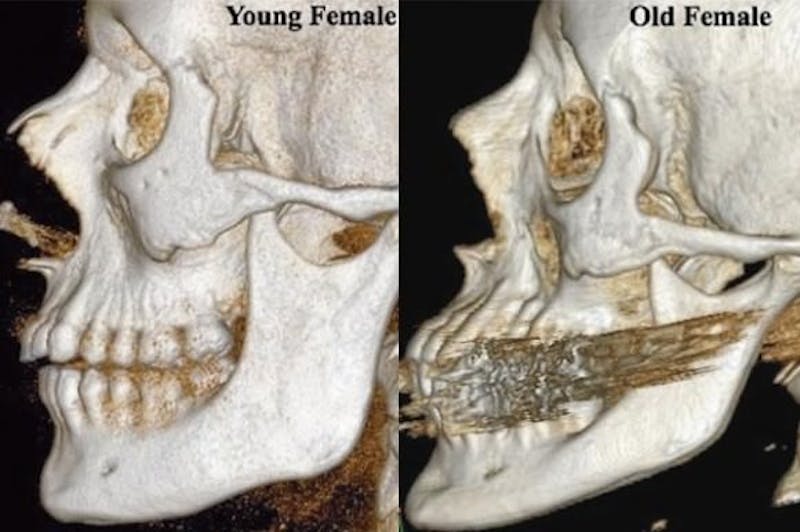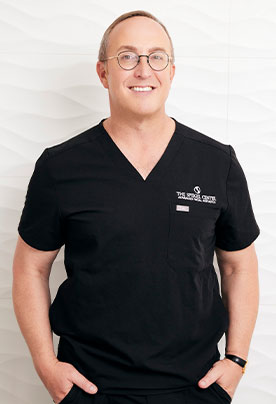
As years pass, facial bones lose volume, contributing to the appearance of aging. Here, CT images show the skull of a woman between the ages of 20 and 40 (left) and the skull of a woman over 65 (right). The bones of the older female show that her eye socket is larger, the angle of her lower jaw bone has dropped and the angle of her brow is reduced. Credit: Howard Langstein/University of Rochester Medical Center.
Now, the key is, that, we’ve been talking about this for years. As you age, your facial bones alter in a way that looks less attractive to us. Of course, that’s how anthropologists can tell how old a person was when they find a bone.
There are easy solutions. For example, for your cheeks: we can do implants to recreate where the bone was and re-drape the skin of the face. Or, we can just inject a material into that area to recreate bone (e.g. radiesse).
We all age, there is nothing we can do it about but thanks to modern day science we have made significant forward strides to be able to reduce the signs of aging in our bodies and our face. Facial plastic surgery technology and science has allowed surgeons to accomplish some amazing surgical treatments. Some procedures are a bit more invasive than others but sometimes reversing the signs of aging requires a great deal of work.
My Health News Daily recently exposed how for some individuals bone shaving and contouring in the face is the only way to truly reduce wrinkles. In this image above you can clearly see that the bone structure has gone through some natural appearance changes. Depending on your age your bone structure could be causing you the majority of your wrinkles. It is natural for certain sections of your face to continue to grow and change underneath your skin.
“The researchers analyzed computed tomography scans of the facial bones of young people (age 20 to 40), middle-age people (41 to 64), and older people (65 and up). (All the CT scans had been medically necessary for other reasons — not for planning plastic surgery, the researchers said.)”





